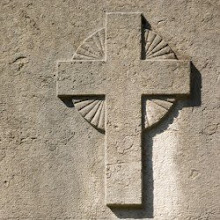I didn’t take a whole lot of photos, but I’ll paste a few of them below. Flash photography wasn’t allowed, and there were too many people to use a tripod. That combined with poor lighting and a hand-held camera results in blurry photos. You can enlarge the photos by clicking on them. Feel free to download any of them. You may use them elsewhere as long as you ascribe credit. The first photo is designed to be used as wallpaper.
Part of the money raised by this tour is being used to complete the Grand Egyptian Museum at Giza. Once the museum is completed (scheduled for 2015), these artifacts will likely never leave Egypt again. Seattle is the last stop on the tour. The exhibit is open until January 6, 2013 at the Pacific Science Center (located to the left of the base of the Space Needle).
A composite of three photos of the gold funerary mask of Psusennes I, (1039-991 BC; 21st Dynasty), whose tomb was discovered intact at Tanis in 1940. Psusennes was the only pharaoh to have been buried in a silver sarcophagus (inlaid with gold). You might think that’s sort of a letdown, but silver was much more rare than gold at the time, so his was an even grander sarcophagus.
Queen Nofret, sculpted in granodiorite, now lacking her original crystal and obsidian eyes. She was the consort of 12th Dynasty Pharaoh Senusret II (also known as Senwosret II or Sesostris II; 1899 – 1878 BC). You can see the huge illuminated Tutankhamun statue over her shoulder in the next room.
A conopic stopper made of calcite in the likeness of King Tutankhamun (1332 – 1323 BC; 18th Dynasty). The mummified organs of the kings were place in four canopic jars and sealed with stoppers. The jars were placed inside a partitioned canopic chest with four compartments, one each for the stomach, lungs, liver, and intestines, the organs of course being needed by the owner in the afterlife.
One of Tutankhamun’s canopic coffinettes. In Tut’s case, one coffinette was nestled inside each canopic jar. This one contained Tut’s stomach. Note the inscriptions on the inside of the coffinette. The coffinette is made of gold and inlaid with carnelian, lapis lazuli, and colored glass. For a very interesting description of the coffinette, go here.
A frontal view of the coffinette, which is twelve inches tall. Tutankhamun is holding the familiar royal sceptres of flail and crook, the flail representing the king as provider of food for his people, or administrator of law, while the crook representing the king as shepherd of his people.
Kings Khafre (2518-2493 BC; 4th Dynasty) and Menkaure (2488-2460 BC; 4th Dynasty), builders of two of the three pyramids at Giza in the Fourth Dynasty.
The right side of the statue of King Khafre (also called Rakhaef or Khephren) showing hieroglyphs, carved in calcite. It is likely Khafre’s face who adorns the sphinx.
The left side view of the funerary mask of Psusennes I. This is the most in focus of the three photos that make up the composite above. Note the coiled cobra, or Uraeus, symbol of royalty and the goddess Wadjet, who was the protector of lower Egypt.
The huge sandstone statue of Amenhotep IV (1353-1337 BC; 18th Dynasty), also known as Akhenaten. Akhenaten introduced monotheism in Egypt by worshiping only Re-Harakhty, who was characterized by a combination of the sun god Re and the hawk-headed Horus. Akhenaten’s reforms, according to Jaromir Malek in his book Egyptian Art, “focused mainly on his own relationship with the divinity. By monopolizing it completely he removed any doubts about his role as the sole intermediary between the god and the people, and in this way he corrected in one sweep any erosion of the royal status and removed the religious justification for the power wielded by the priesthood of the traditional gods.” Akhenaten’s queen was the beautiful Nefertiti. Akhenaten was likely the father of Tutankhamun. This statue was located outside one of the temples dedicated to the Aten (Re-Harakhty's sun-disc symbol) at Karnak, located in Thebes, now Luxor.
A bas-relief stela of King Horemheb, or Haremhab (1323-1295 BC; 18th Dynasty), carved in quartzite. Horemheb was King Tutankhamun’s Commander-In-Chief. Once he became king, he returned Egypt to polytheism, which had been briefly abandoned by King Akenhaten. I think the King is here depicted making an offering to the gods, holding a pipe and a Nu-jar. The Nu-jar would contain milk or honey. The Pharaoh was to be the mediator between the people and their gods. Quoting Malek, “For much of Egyptian history, only the king was able to approach and plead with the gods on the people’s behalf. He was responsible for the smooth running of the world and the maintenance of the established order, the tasks with which he was entrusted at his coronation. The success of the king in protecting the established order against internal and external enemies, safeguarding its smooth functioning, and maintaining good relations with deities was essential for everybody’s wellbeing.” Above Horemheb’s head is an eagle with a shen in its talons, the hieroglyph symbolizing eternity, ensuring the king’s life in the afterworld.

















4 comments:
Unfortunately, I'm concerned that with the Muslims coming to power in Egypt this may be the last that we see of artifacts such as this.
I thought of that as well. Similar to what the Taliban did to the Buddhist statues in Afghanistan. I think we're safe in assuming they won't be able to destroy the pyramids!
Ancient Egypt has always been a mystifying era of world history. Nonetheless, thank you for sharing this review to us.
Thank You admin for sharing such a nice information, I want to share such a nice information about my website detail are mention below
If you are looking to start up your business in dubai then you need to call company fromation companies in dubai
Post a Comment